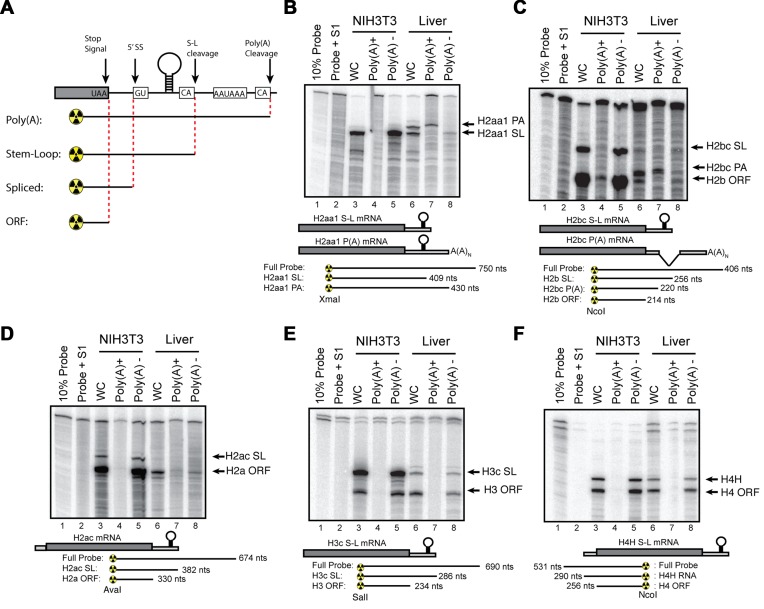Figure 3.
Expression of histone mRNAs is mouse fibroblasts cells and mouse liver. (A) Schematic of generalized S1 nuclease protection assay performed on mouse histone mRNA. A generalized histone mRNA is depicted indicating possible 5′splice sites (5'ss), stem-loop cleavage sites (S-L cleavage) or poly(A) cleavage sites. S1 nuclease protection probes will protect a given mRNA to the point that cleavage or splicing occurs (indicated below). Note that due to the high degree of conservation in mice, all of the mRNAs for a specific histone class (i.e. H2B.1 or H2A.2) will be protected up to the stop codon. (B–F) Total cell RNA from NIH3T3 cells and mouse liver was fractionated into polyA+ and polyA− fractions. Total RNA (whole cell (WC)) and poly(A)+ and poly(A−) RNA were probed in an S1 nuclease protection assay. Five micrograms of total 3T3 cell RNA and 50 μg of liver RNA was analysed using the S1 nuclease protection assay of a 3′ labelled fragment at the indicated restriction enzyme site for (B) Hist2H2aa1, (C) Hist1H2bc, (D) Hist1H2ac, (E) Hist2H3c or (F) Hist2H4H. The probe used for histone H4H was labelled at the 5′ end of the indicated restriction site. For each experiment, below autoradiogram, possible mRNA isoforms are indicated as well as protected fragments and sizes for S1 nuclease probes.

